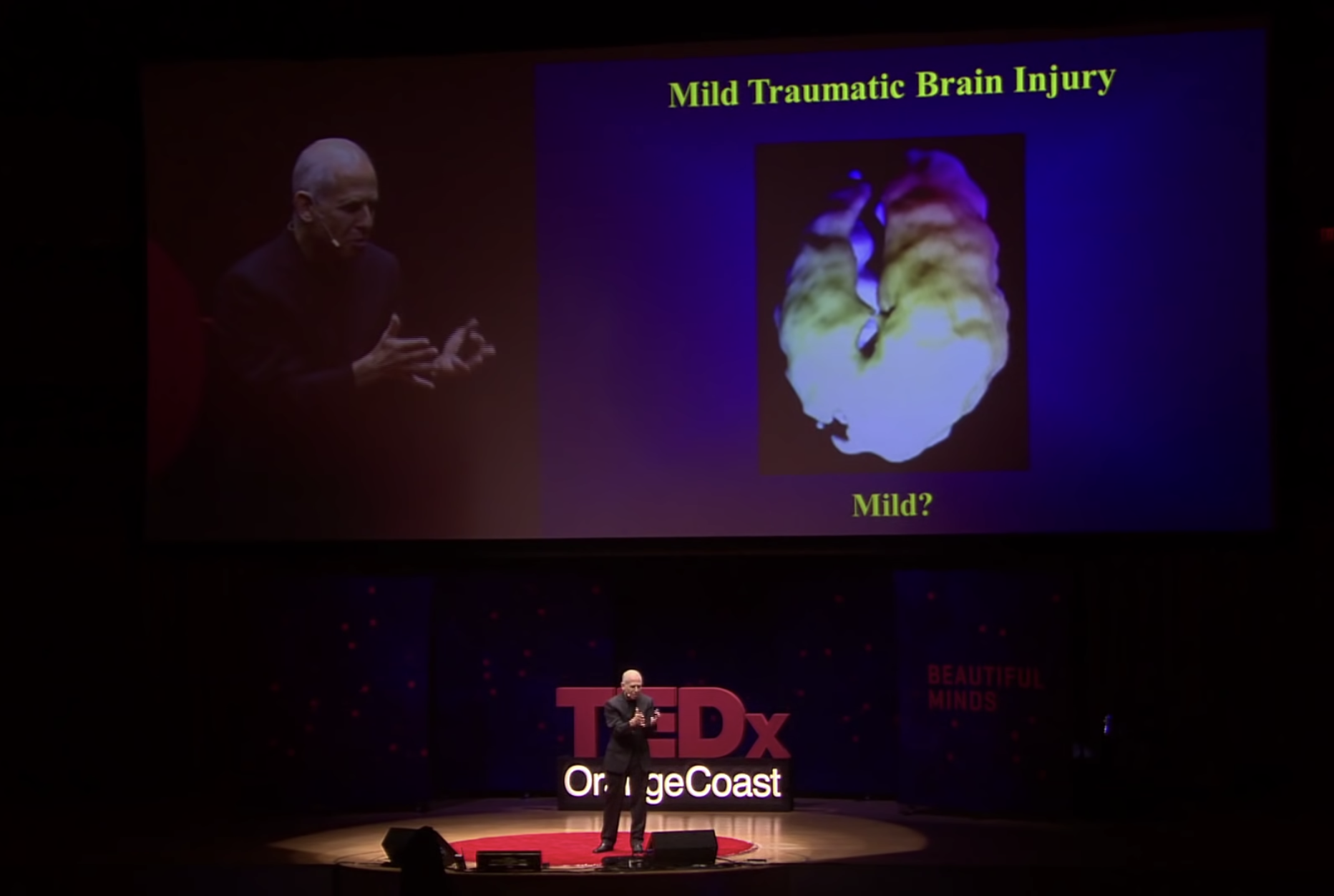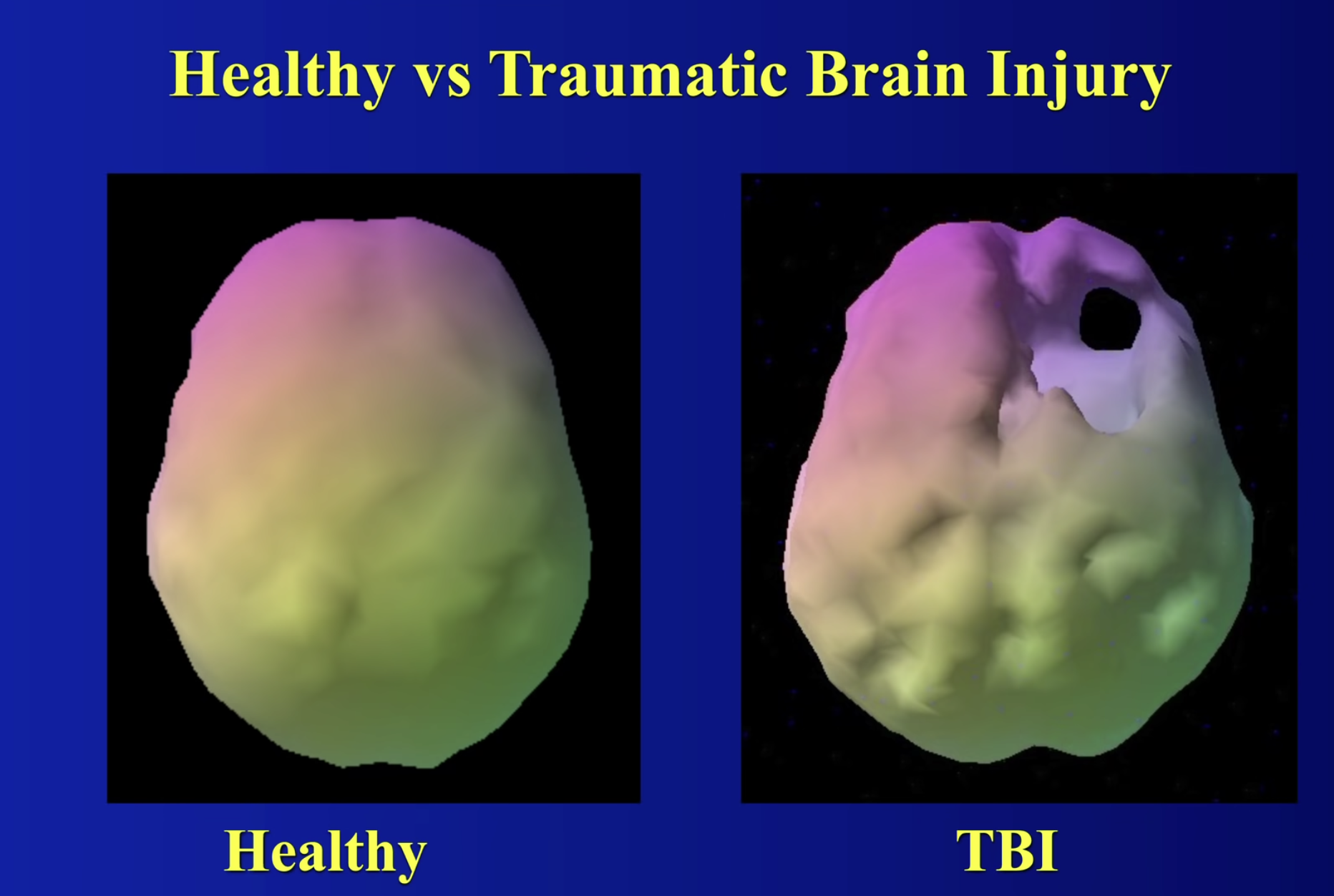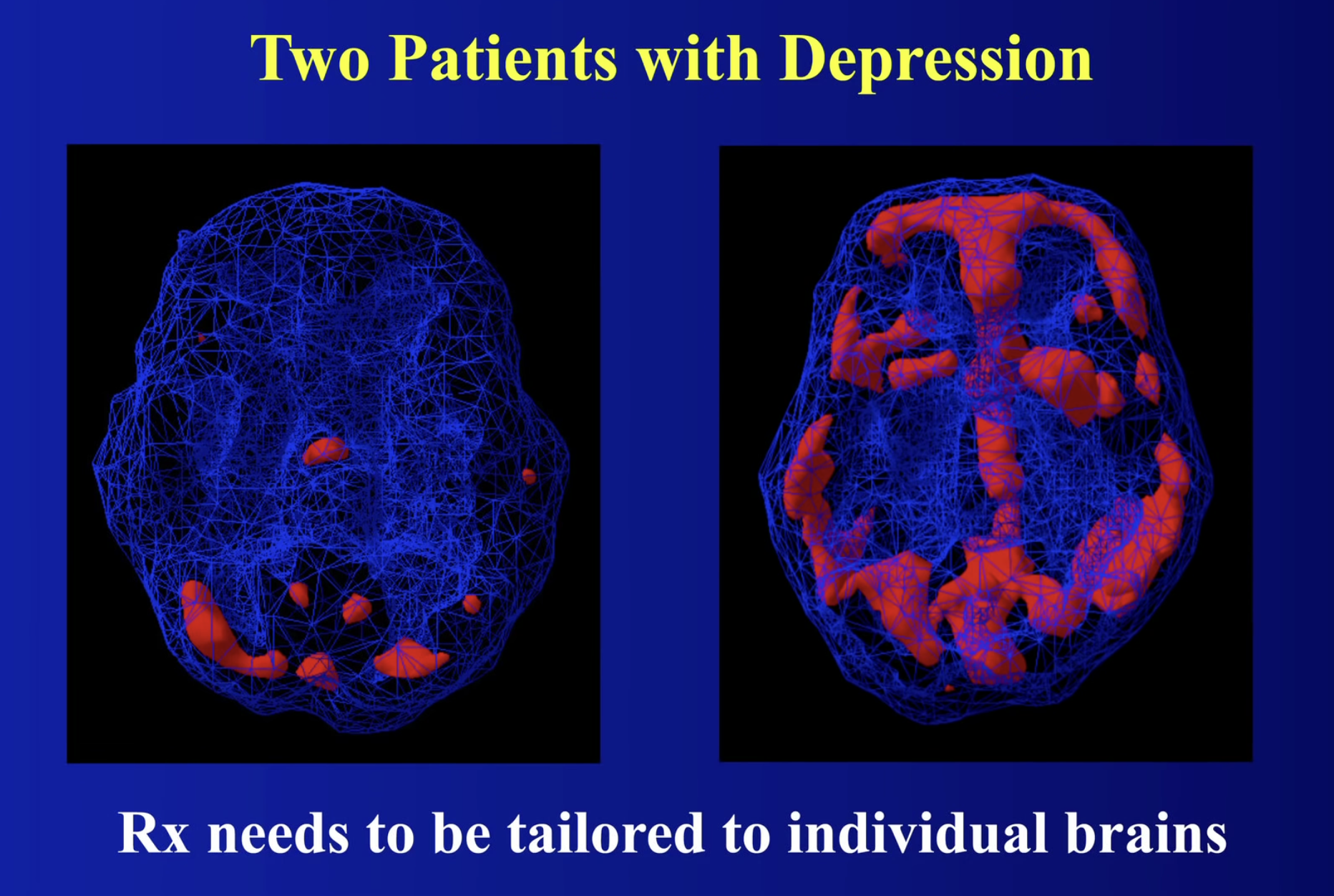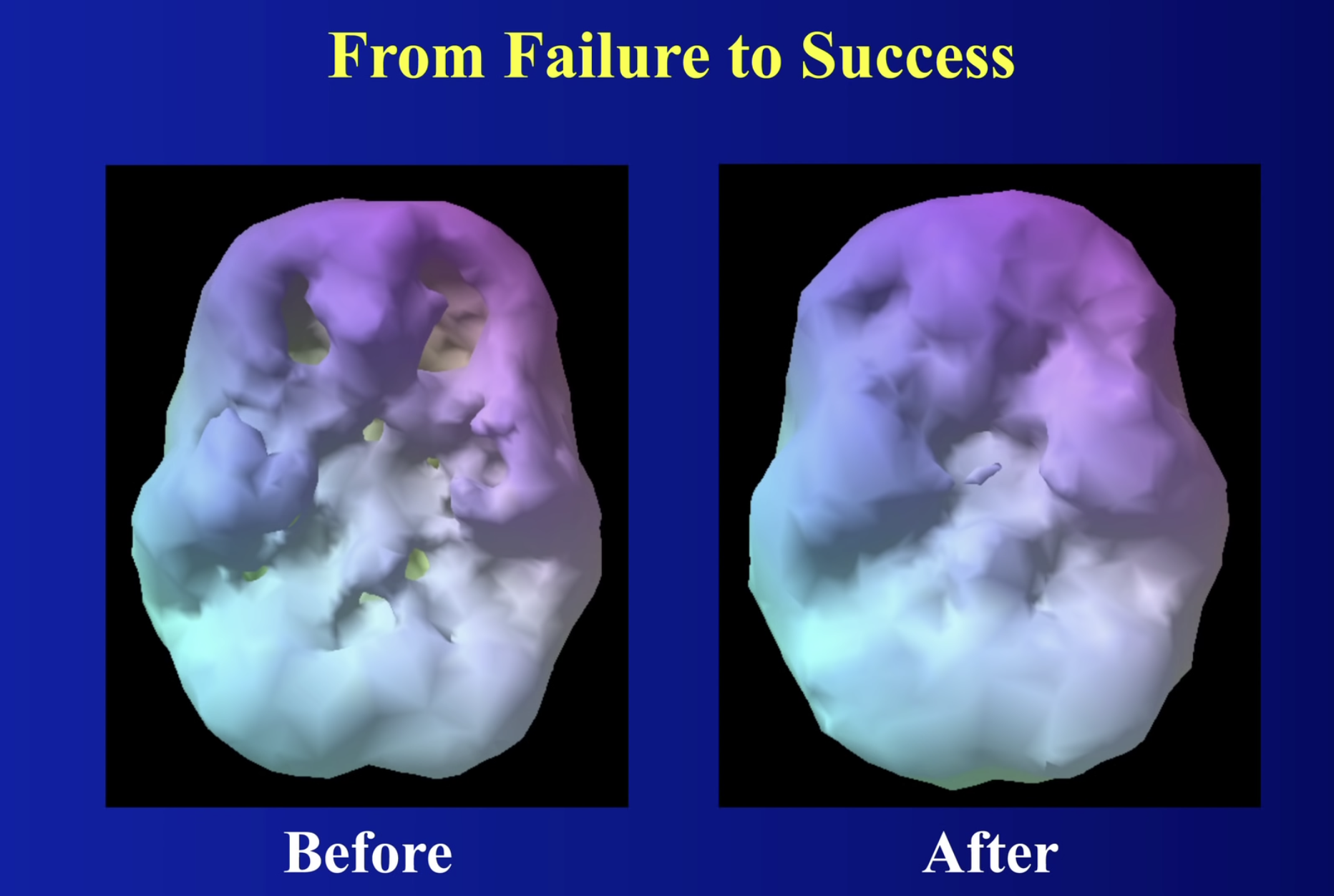Magnetic resonance imaging showed a cyst in Andrew's brain. When it was removed surgically, the happy kind child returned to the family, as they knew him before. Andrew is now a grown-up healthy man. The tragedy did not happen.
Daniel Amen: the most important conclusion after 83 thousand brain scans

Amen Clinics have the world's largest database of functional brain scans relating to the brain and behavior, totaling nearly 90,000 scans on patients from over 111 countries. Dr. Amen is a Distinguished Fellow of the American Psychiatric Association ( WebMD ).Judges and lawyers turn to Amen for consultations, with questions about what modern neuroscience can show about the most ancient social disease - crime. His experience includes data obtained from computed tomography of the brain of more than 500 convicted of various crimes, including 90 - for murder.
... our conscious perception of the world around us and ourselves in this world is in fact a kind of controlled hallucinations, the source and mechanism of occurrence of which lies in our living organism.
…, — . , . . , — , , , . , . , . . , , — .
… — , — - , . , . , .
« — » ( , ).
… , . , , — , , , . . , .
… , , , , . — , .
, , , , .
«-» ( , ).
- . , .
- . , .
- Undiagnosed borelliosis (Lyme disease).
- Undiagnosed brain tumors.
In terms of its toxicity in the group of heavy metals, mercury is second only to polonium .
Traumatic disorders.

Minor physical disorders, minor traumatic brain damage are the main cause of behavioral disorders that destroy the lives of both people suffering from them and, often, those around them. People complain of problems with emotional control, anxiety disorders, insomnia, turn to neurologists, psychologists, psychiatrists and clairvoyant women, receive prescriptions, drink pills, burn frog tails on a full moon - not suspecting that all this time they are experiencing consequences, for example, a small concussions, which they could have received in childhood, when they were hit on the head with a briefcase during recess at school, on the football field, when they were hit on the head by a ball, at home, when they hit the back of their heads with a bang against the wall and got a bump, or last week when the taxi driver braked sharply and their foreheads hit the glove compartment lid.
Diagnostics
Another case from the practice of Dr. Amen: a boy who fell down a ladder when he was three years old. He was unconscious for only a few minutes, but the effect lasted for years. When Dr. Daniel Amen met him when he was 15, he was kicked out of third school for violent behavior. He was prescribed psychiatric drugs and behavioral therapy, which, if you think about it, is a cruel joke in itself, because his behavioral disturbances were not a problem in themselves - they were a symptom of a problem. The problem that was literally in my head. “Something is wrong with his head,” everyone would say - and he would be right in his case. But what not everyone would do - which almost no one does in such cases, but Dr. Amen did - it would look into his head to see - and what, in fact, is the matter?
Here are brain scans of two patients diagnosed with major depressive disorder :

The scans show that the cause of MDD in the patient on the left is an unhealthy low brain activity, in the patient on the right it is an unhealthy high.
The diagnosis is the same.
The reasons are just the opposite. In medicine, this is a ubiquitous phenomenon. For example, a person's heart problems can be from both a sedentary lifestyle and excessive physical exertion. Any extreme in the operation of the human body, be it an extreme minimum or an extreme maximum, leads to breakdowns. This is logical.
Prevention and treatment measures, depending on which of the extremes threaten health in each specific case, are completely different - this is also logical.
But how can a person suffering from depression and doctors know about it if they look at the symptoms (which are used to diagnose), but not at the brain itself? A diagnosis made in this way is useless. The literal answer to the classic question "Doctor, what's wrong with me?" useless unless it is followed by an answer to the real question: "Doctor, what should I do about this?"
This is one of the reasons why people often avoid doctors until the last moment: because doctors, when it comes to serious diseases, are usually well trained to answer the first question - what is the name of the disease - and poorly know how to answer the second - but do - what about it? "Here is your diagnosis, now live with it." While solutions exist, methods have been developed, technologies are available, there is a lack of practice in their application in many areas. And the head area, behavioral disorders is the weakest point of modern medicine.
Without a brain scan, conduct disorders are diagnosed in 2021 in the same way they were in 1840: by looking for recognizable sets of symptoms in oral conversation about problems.
Behavioral disorders are the only area of medicine in which doctors almost never look at the organ that is being treated for abnormalities — the brain.
Cardiologists look, neuropathologists look, surgeons look - psychiatrists guess.
If a person complains of problems with blood vessels or is worried about the prevention of such, they do an ECG and a computed tomogram (CT) to determine the essence of the problems - they are caused by excessive load or insufficient. Whereas when it comes to behavioral disorders, it usually doesn't occur to anyone to look into the corresponding organ - the brain. This is absurd.
Therapy should be tailored to the specific brain, not a set of symptoms.
Left is a brain scan of a teenage girl with attention deficit disorder who cuts herself, clashed with her parents, and fell behind in school.

Researchers have found that undiagnosed traumatic brain damage is a major cause of homelessness, alcohol and drug addiction, depression, panic attacks, problems with concentration, anxiety, attention deficits, outbursts of aggression, unmotivated violence, and suicide.
Most of the problems of civilization associated with violence - from domestic murders to genocides - seem insoluble only because people seek answers where the problem manifested itself in the form of tragic consequences, and not where it arose. They are looking for where it is light, and not where they have lost.
Health care, by definition, must be done while the person is healthy. When a person is already sick and is looking for salvation in medicine, this is a failure of health care. Just like fire safety is not a fire brigade at every corner, but fire prevention measures to prevent a fire.
Functional magnetic resonance imaging is a powerful flashlight available, thanks to modern science, that allows you to shed light into the black box of the human brain, the source of human behavior - and, instead of looking for someone to blame for another tragedy, to prevent it.
UPD. " Galyaviev diagnosed with a brain disease". What kind of disease - I have not yet seen in the news, but, again, from a probabilistic point of view, based on the known experience of such cases, it is most likely a tumor or a microstroke. It is unlikely that a traumatic injury (if a brick fell on his head two months ago, and after that he told his mother that he was a god, it would probably be in the news right away). Although the same tumor may be the result of the development of an old head injury.
The second most likely, considering how sharply the tower was demolished - an undiagnosed infectious disease, viral or microbial. Heavy metal poisoning is the least likely because they develop behavioral disorders more gradually, rather than switching as at the click. But that's all - on average. What happened specifically in the case of Galyaviev - the MRI will show when (if) it will finally be done to him.
Only the diagnosis had to be made not when eight children and the teacher died, but before that. Before Galyaviev became the very Galyaviev, and not after - so that this would not happen in principle.
Undiagnosed disorders of the physiology of the brain, leading to behavioral disorders, are present not only in Galyaviev, but, to one degree or another, in a significant part of the population of any country, including Russia. Nobody knows which part, because there is no preventive healthcare in Russia, it has been destroyed.
If Russia had preventive medicine - he would have been noticed before nine people died and another twenty were sent to the hospital. How many more victims will there be? I'll tell you how many: tens, hundreds of thousands of victims of domestic violence and murder a year - this is a 90% medical problem, not a criminal one. They are victims of the commercialization of medicine, which stimulates the development of medicine for treatment instead of medicine for prevention - because there is more money in the treatment of problems that can no longer be ignored than in their prevention.
As a rule of thumb, the level of domestic violence in society correlates with the level of undiagnosed brain diseases.
The main lesson of the Kazan tragedy should be the need to create preventive medicine in Russia - for prevention:
- metabolic disorders that are associated with 2/3 of the causes of death ( diabetes , cancer, cardiovascular);
- diseases of the brain, the consequences of behavioral disorders caused by them, for sure, can be attributed to the last third.
Even the dentist is advised to go twice a year to have your teeth checked. Don't you need to check your head? Well, yes, nothing important happens there. MRI of the brain for therapeutic purposes, for the prevention of brain diseases and their social consequences, should be a right, not a privilege.
